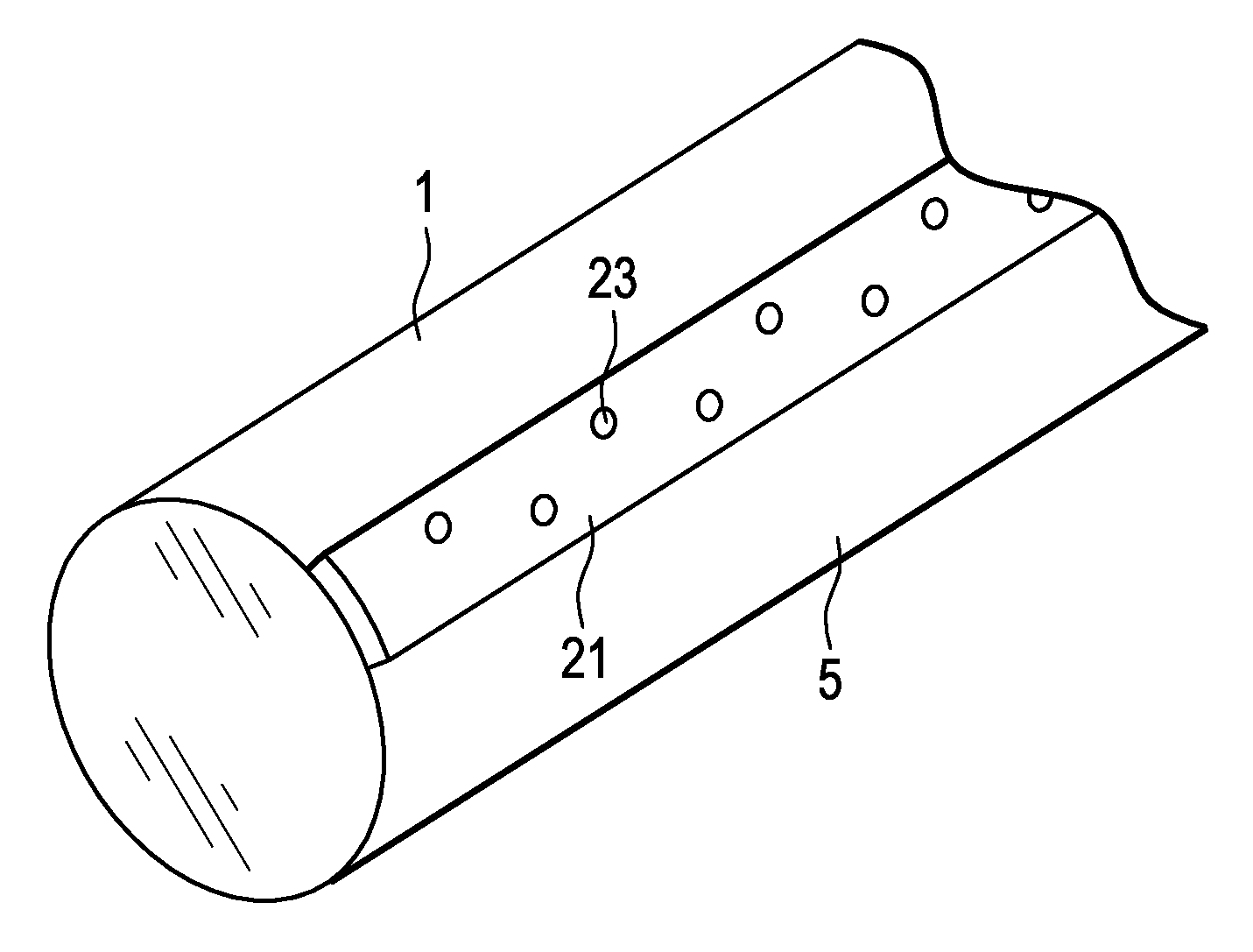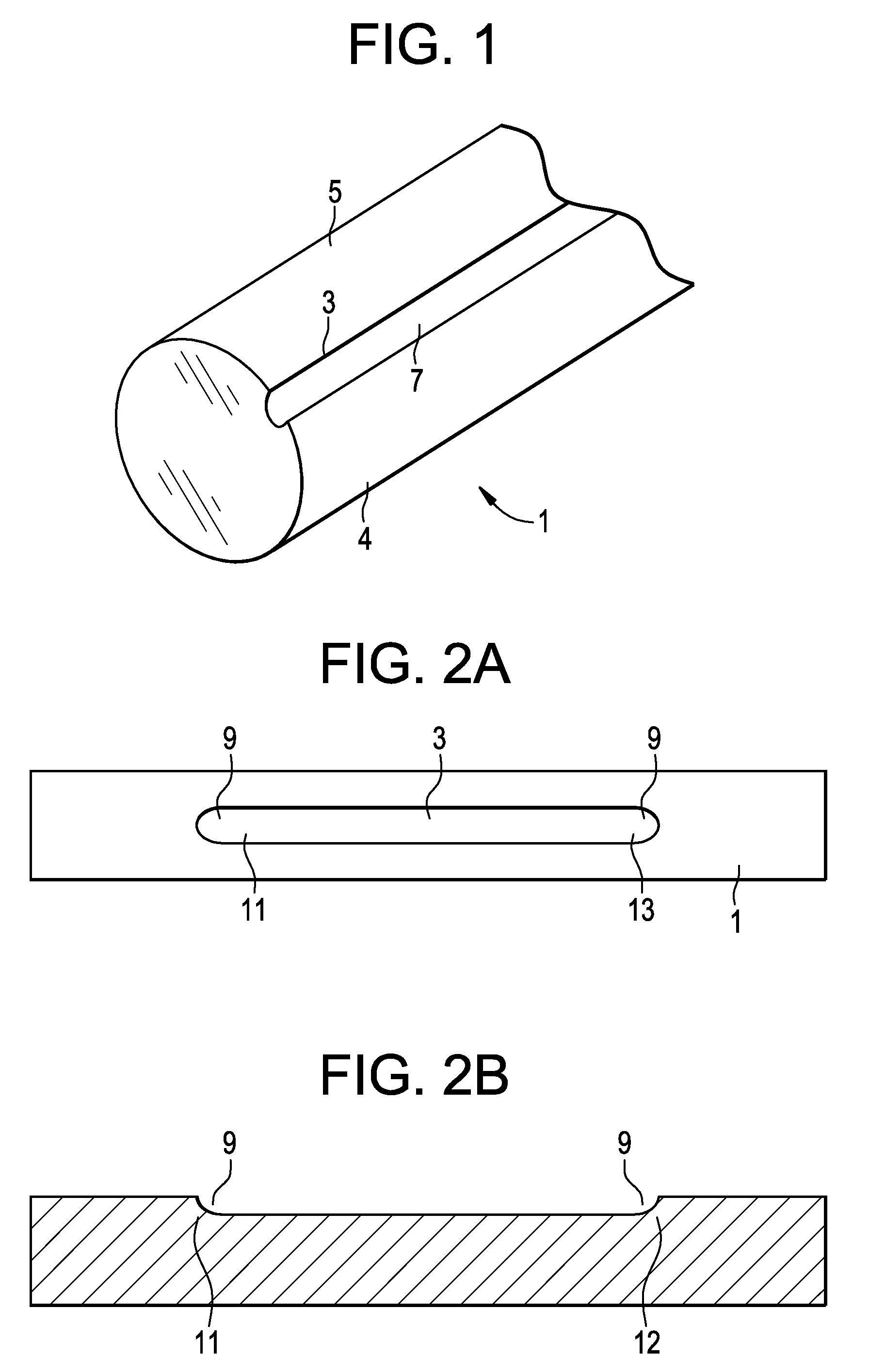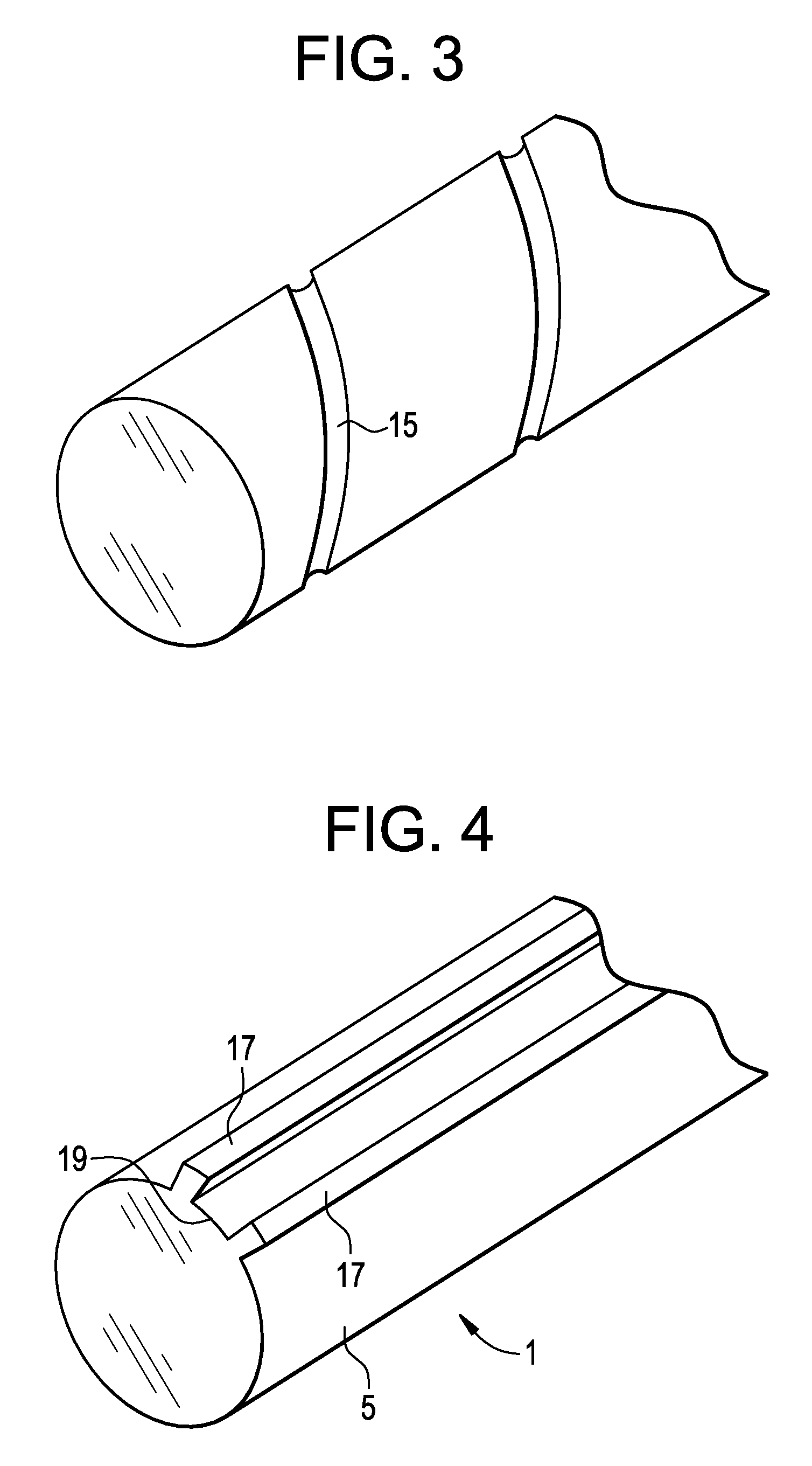Anti-Infective Spinal Rod with Surface Features
a spinal rod and surface technology, applied in the field of anti-infective spinal rods with surface features, can solve the problems of reducing the mechanical interconnection strength of the device, affecting the mechanical function of the device, and the inability of the immune system to resolve the infection, so as to achieve the effect of preserving mechanical performance and enhancing mechanical performan
- Summary
- Abstract
- Description
- Claims
- Application Information
AI Technical Summary
Benefits of technology
Problems solved by technology
Method used
Image
Examples
Embodiment Construction
[0024]The present invention relates to the concept of an antibiotic coating on a grooved spinal rod. The invention being proposed is a mechanically modified spinal rod. The modifications are generally to the rod's surface features and cross-sectional geometry. In preferred embodiments of the present invention (FIG. 1), the spinal rod 1 has a groove 3 upon its outer surface 5, and the antibiotic 7 rests in the groove, so that spinal rod should maintain a substantially circular cross-sectional area if it is to interface with current screw system. Also preferably, the new features should not make the spinal rod prone to stress-risers, crack initiation, or material issues that will compromise the device's mechanical strength or fatigue life. Third, the anti-bacterial coating should be able to prevent bacterial colonization of the rod in the acute term. Finally, the rod surface should be able to accept a sufficient volume of anti-infective coating materials to deliver an effective payloa...
PUM
 Login to View More
Login to View More Abstract
Description
Claims
Application Information
 Login to View More
Login to View More - R&D
- Intellectual Property
- Life Sciences
- Materials
- Tech Scout
- Unparalleled Data Quality
- Higher Quality Content
- 60% Fewer Hallucinations
Browse by: Latest US Patents, China's latest patents, Technical Efficacy Thesaurus, Application Domain, Technology Topic, Popular Technical Reports.
© 2025 PatSnap. All rights reserved.Legal|Privacy policy|Modern Slavery Act Transparency Statement|Sitemap|About US| Contact US: help@patsnap.com



